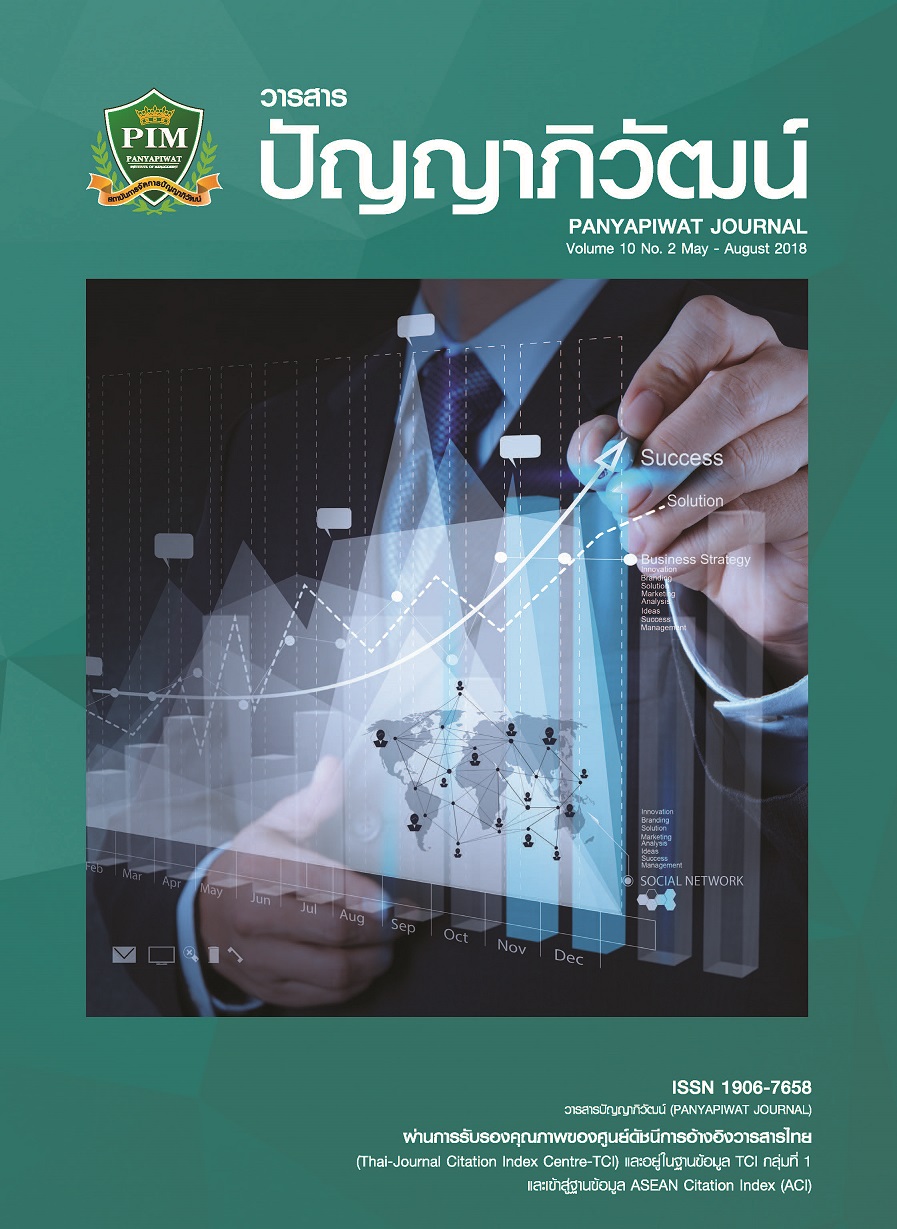งิ้วแต้จิ๋ว: การสร้าง และฟื้นฟูอัตลักษณ์จีน ภายใต้เครือข่ายความสัมพันธ์ของชุมชนคนจีน ในเชิงเศรษฐกิจและวัฒนธรรม
Main Article Content
บทคัดย่อ
การแสดงงิ้วในเมืองไทยเฟื่องฟูสูงสุดในรัชสมัยพระบาทสมเด็จพระจุลจอมเกล้าเจ้าอยู่หัว ซึ่งในสมัยนั้นมีคณะงิ้วเกิดขึ้นมากมายทั้งที่เป็นของคนจีนแท้ๆ และคณะที่คนไทยตั้งขึ้นมาเอง นอกจากนั้นในช่วงดังกล่าวมีการเปิดโรงเรียนสอนการแสดงงิ้วขึ้นเพื่อเป็นการแลกเปลี่ยนวัฒนธรรมไทย-จีน มีการเปิดโรงงิ้วขึ้นอย่างแพร่หลายโดยเฉพาะย่านเยาวราชและถนนเจริญกรุง
ภาพในอดีตสำหรับงิ้วอาจจะเป็นมหรสพที่ได้รับความนิยมอย่างสูง แต่เมื่อเริ่มมีการรับวัฒนธรรมตะวันตกเข้ามาทำให้ชาวไทยเชื้อสายจีน (Thai-Chinese) หลงเหลือความเป็นจีนมีอยู่น้อยเต็มที สาเหตุหนึ่งเป็นเพราะในสมัยจอมพล ป. พิบูลสงครามได้ใช้นโยบายชาตินิยมและมีความพยายามผลักดันในผู้มีเชื้อสายจีนให้มีความเป็นไทยและด้วยเหตุผลทางความมั่นคงและหวั่นเกรงภัยคอมมิวนิสต์ จอมพล ป. ได้มีนโยบายสั่งปิดโรงเรียนจีนมากกว่า 300 โรงเรียน ซึ่งถือว่าเป็นการปราบปรามความเป็นจีนที่เกิดขึ้นอย่างเด่นชัดในสังคมไทย
นอกจากนี้ในช่วงหลังสิ้นสุดสงครามโลกครั้งที่สอง และกองทัพแดงของฝ่ายคอมมิวนิสต์จีนได้ทำสงครามกับรัฐบาลจีนฝ่ายประชาธิปไตยของประธานาธิบดีเจียไคเช็ก ทำให้ชาวจีนแต้จิ๋วรวมถึงนักแสดงงิ้ว และเจ้าของคณะงิ้วได้อพยพเข้ามาในประเทศไทยในช่วงปี พ.ศ. 2495-2505 สองฟากของถนนเยาวราช และเจริญกรุงเต็มไปด้วยโรงงิ้ว ในช่วงนี้มีงิ้วมากถึง 80 คณะ ซึ่งนับเป็นช่วงที่รุ่งเรืองที่สุดของงิ้วในประเทศไทย หลังจากปี พ.ศ. 2505 งิ้วเริ่มเสื่อมความนิยมลง จนกระทั่งปี พ.ศ. 2509 โรงงิ้วในเยาวราชต่างเลิกกิจการและเปลี่ยนเป็นโรงภาพยนตร์แทน คณะงิ้วแต้จิ๋วปัจจุบันเกือบทั้งหมดในประเทศไทยเป็นคณะงิ้วเร่ที่จัดแสดงตามศาลเจ้าเท่าที่รวบรวมได้ มีอยู่ราว 12 คณะ
การศึกษาครั้งนี้มีวัตถุประสงค์เพื่อศึกษาการกลับมาฟื้นฟูอีกครั้งของงิ้วแต้จิ๋ว ภายใต้สถานการณ์เช่นนี้งิ้วแต้จิ๋วได้มีการปรับเปลี่ยนให้เข้ากับการเปลี่ยนแปลงของสังคม งิ้วแต้จิ๋วเชื่อมโยงกับความเชื่อศรัทธาศาสนาและศาลเจ้า และถือเป็นศิลปะชั้นสูง จากการศึกษาพบว่า เครือข่ายทางสังคมที่มีความสำคัญในการธำรงอัตลักษณ์จีน ได้แก่ สมาคมเครือข่ายศาลเจ้า และกลุ่มเถ้าแก่อุปถัมภ์ ซึ่งมีส่วนในการทำให้อัตลักษณ์จีนดำรงอยู่ท่ามกลางการปราบปรามที่เคยเกดิ ขึ้นในช่วงที่รัฐบาลไทยใช้นโยบายชาตินิยม และยังทำให้อัตลักษณ์จีนสามารถดำรงอยู่ได้อย่างต่อเนื่อง โดยเฉพาะอย่างยิ่งในการแสดงอัตลักษณ์จีนผ่านการแสดงงิ้วซึ่งต้องเกิดจากความร่วมมือและการสนับสนุนจากชุมชนชาวจีน ซึ่งมีความสำคัญอย่างยิ่งต่อการแสดงงิ้ว การแสดงงิ้วแต้จิ๋วไม่ได้เป็นเพียงเพื่อความบันเทิง แต่ยังแสดงให้เห็นถึงการเชื่อมโยงกับความเชื่อ รากเหง้าของคนจีนและเครือข่ายของความสัมพันธ์ของชุมชน (Guanxi) ในบริบทของความสัมพันธ์ทางเศรษฐกิจ สังคม และวัฒนธรรม ดังนั้นงิ้วแต้จิ๋วเป็นส่วนหนึ่งของอัตลักษณ์ของชาวจีนและมีความผูกพันกับเครือข่ายความสัมพันธ์ของชุมชนชาวจีน
Article Details
“ข้าพเจ้าและผู้เขียนร่วม (ถ้ามี) ขอรับรองว่า บทความที่เสนอมานี้ยังไม่เคยได้รับการตีพิมพ์และไม่ได้อยู่ระหว่างกระบวนการพิจารณาลงตีพิมพ์ในวารสารหรือแหล่งเผยแพร่อื่นใด ข้าพเจ้าและผู้เขียนร่วมยอมรับหลักเกณฑ์การพิจารณาต้นฉบับ ทั้งยินยอมให้กองบรรณาธิการมีสิทธิ์พิจารณาและตรวจแก้ต้นฉบับได้ตามที่เห็นสมควร พร้อมนี้ขอมอบลิขสิทธิ์บทความที่ได้รับการตีพิมพ์ให้แก่สถาบันการจัดการปัญญาภิวัฒน์หากมีการฟ้องร้องเรื่องการละเมิดลิขสิทธิ์เกี่ยวกับภาพ กราฟ ข้อความส่วนใดส่วนหนึ่งและ/หรือข้อคิดเห็นที่ปรากฏในบทความข้าพเจ้าและผู้เขียนร่วมยินยอมรับผิดชอบแต่เพียงฝ่ายเดียว”
References
Bauman, R. & Ritch, P. (1994). Informing Performance: Producing the Coloquio in Tierra Blance. Oral Tradition, 9(2), 255-280.
Cheung, C. K. (2004). Chinese Diaspora as a Virtual Nation: Interactive Roles between Economic and Social Capital. Political Studies, 52(4), 664-684.
Chong, T. (2006). Ethnic Identities and Cultural Capital: An Ethnography of Chinese Opera in Singapore. Identities: Global Studies in Culture and Power, 13(2), 283-307.
Chu, G. C. & Ju, Y. (1993). The Great Wall in Ruins: Communication and Cultural Change in China.Albany: State University of New York Press.
Gold, T., Guthrie, D. & Wank, D. (2004). Social Connections in China Institutions, Culture, and the Changing Nature of Guanxi. UK: Cambridge University Press.
Hall, S. & du Gay, P. (1996). Questions of Cultural Identity. London: SAGE Publications.
Jameson, F. (1991). Postmodernism or the Cultural Logic of Late Capitalism. Durham: Duke University Press.
Josselin, D. & Wallace, W. (2001). Non-state Actors in World Politics. New York: Palgrave.
Juntaronanont, P. (2004). Chinese Way. Bangkok: Praphansan. [in Thai]
Juntaronanont, P. (2013). “Teochew opera” history and relationship with Chinese shrine. In Thai social and cultural context: The changing and renovation in order to take part in ASEAN community in the cultural aspect. Bangkok: Thai Khadi Research Institute, TU. [in Thai]
Kitti-asa, P. (2003). Pop: The Thai Identity in Popular Culture. Bangkok: The Princess Sirindhorn Anthropology Centre. [in Thai]
Lei, D. P. (2011). Alternative Chinese Opera in the Age of Globalization: Performing Zero. New York: Palgrave.
Liu, H. (1998). Old Linkage, New Networks: The Globalization of Overseas Chinese Voluntary Associations and its Implementations. The China Quarterly, 155, 582-609.
Luangthomkun, T. (2007). The Position of Non-Thai Languages in Thailand. Language, Nation and Development in Southeast Asia, Chulalongkorn University.
Lynn, P. (1999). The Encyclopedia of the Chinese Overseas. Massachusetts: Harvard University Press.
Niyomsilp, S. (2014). The Fourth Wave: Southeast Asia and New Chinese Migrants. Proceedings of the 4th National Sociological Conference, National Research Council of Sociology, Faculty of Science, Chulalongkorn University. On the occasion of the 18th and 19th of April 2012 at the Marquis Grand Hotel. [in Thai]
Osatharom, W. (2013). Chinese opera in Thai social art and cultural context. In Thai social and cultural context: The changing and renovation in order to take part in ASEAN community in the cultural aspect. Bangkok: Thai Khadi Research Institute, TU. [in Thai]
Phanjinda, P. (2010). The analysis of the phonomeon of recalling the past from the Thai periodic motion pictures. Chiang Mai: Chiang Mai University. [in Thai]
Pong, C. S. (2002). Teochew opera in Singapore: continuity and change. Tirai Panggung, 5, 39-55.
Poston, D. L. Jr. & YuYu, M. (1990). The Distribution of the Overseas Chinese in the Contemporary World. International Migration Review, 24(3), 480-508.
Safran, W. (1991). Diaspora in Modern Societies: Myth of Homeland and Return. Diaspora, 1(1), 83-99.
Schechner, R. (2011). Between Theater and Anthropology. Philadelphia: University of Pennsylvania Press.
Sikhakoson, T. (2012). Teochew: Great minority. Bangkok: Matichon. [in Thai]
Skinner, G. W. (1957). Chinese Society in Thailand: An Analytical History. New York: Cornell University Press.
Smalley, W. A. (1994). Linguistic Diversity and National Unity: Language. Chicago: University of Chicago .
Songprasert, P. (2015). Modern Overseas Chinese. Bangkok: Haier Press. [in Thai]
Su, C. & Littlefield, J. E. (2001). Entering Guanxi: A business ethical dilemma in mainland China? Journal of Business Ethics, 33(3), 199-210.
Tong, C. K. (2001). Alternate Identities: The Chinese of Contemporary Thailand. Singapore: Times Academic Press.
Wong, Y. H. & Chan, R. Y. (1999). Relationship marketing in China: Guanxi, favouritism and adaptation. Journal of Business Ethics, 22(2), 107-118.
Yang, M. M. (1994). Gifts, favors, and banquets: the art of social relationships in China. Ithaca, NY: Cornell University Press.
Zhuang, G. & Wang, W. (2010). Migration and Trade: The Role of Overseas Chinese in Economic Relations between China and Southeast Asia. International Journal of China Studies, 1(1), 174-193.

